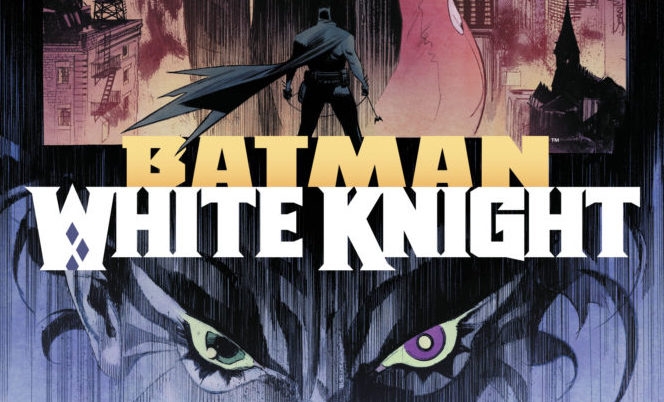The complicated corporate relationships between the different groups that work with the same intellectual property is often the worst kind of inside baseball knowledge. Understanding the difference between Marvel Comics editorial and Marvel Custom Solutions isn’t something most people think about until the latter makes an ill-advised deal with a weapons manufacturer without talking to the former. But at the very least, it can be helpful for comics readers to remember that marketing departments aren’t usually in the know about what’s going on in editorial.
Because of this awkward relationship, Batman: White Knight has suffered from a weird PR problem. Described as, “What if the Joker was a good guy?” it seems like the very worst kind of dull comic book premise: redeeming the irredeemable instead of diving deeper into some of the fascinating and unique characters that have been flying under the radar at DC. Thankfully, Batman: White Knight #1 (DC) flies in the face of that misguided marketing. Rather than a redemption arc for the Joker, it’s about the elephant in the room that most Batman writers avoid: directly confronting the collateral damage that he and his allies inflict on Gotham. Though a lot of people dragged this criticism up repeatedly after Batman V. Superman: Dawn Of Justice premiered in theaters, it’s not often that comics really confront just how complicit, and perhaps even directly responsible, Batman is in the horrors that have gripped Gotham for so long.
There are pages in this issue that are a bit wordy, but artist-writer Sean Murphy makes it worth it with tight, atmospheric panels that convey a lot more emotion than your average punch-’em-up Batman sequence does. It’s easy to see just how raw and vulnerable the characters are. There’s a real sense of complicated, warring loyalties, and the book leaves the reader with the impression that no one really knows just what side they land on when it comes to the question of how much the Batman is to blame for the trouble in his city. Murphy is a skilled artist who has clearly thought very seriously about how to best make this comic. It’s cinematic and graphic without numbing the reader to the amount of violence that the characters inflict on one another, and Matt Hollingsworth’s colors take it from sharp to gorgeous, evoking the color schemes of Batman: The Animated Series without feeling stale.
It’s no easy feat to write a tentpole comic that confronts issues of institutionalized violence against marginalized people, but ultimately that’s what Murphy has done. Saying that White Knight is about police brutality isn’t precisely correct, but it’s definitely one of the subjects that the book touches upon. There’s real, serious questions about the scale and scope of law enforcement reactions to minor crimes. There are questions about how the police can turn a blind eye on the devastation Batman can bring to their city, and the privilege that Batman has as a man who can operate both inside and outside the law, funded by private wealth. Certainly, the Joker, cured and in control of his faculties, isn’t the only character that can be used to have these conversations, though framing him as the White Knight to Batman’s Dark one has a certain poetry to it. It might have been a more compelling story if this confrontation came from someone outside the of Batman’s most famous villain, like the people of Burnside or the Narrows filing a class-action suit against GCPD and Batman. But that probably wouldn’t have made for a great comic, and Murphy is well on his way to doing that. If the rest of the eight-issue miniseries are as well thought-out and beautiful as this one, he’ll have made a truly excellent Batman book that will stay with readers for years to come.





























![Rob Reiner's son booked for murder amid homicide investigation [Updated]](https://img.pastemagazine.com/wp-content/avuploads/2025/12/15131025/MixCollage-15-Dec-2025-01-10-PM-9121.jpg)











